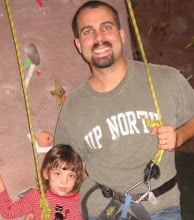In the mid-17th century, Spanish seafarers sailed up the west coast of the Americas to what is now known as the Baja peninsula. The cartographers of the time simply drew a straight line up from the Strait of California to the Strait of Juan de Fuca between Vancouver Island and Washington state. Consequently, the maps that were published in 1635 show very clearly that California was an island. For 50 years, then, the years of the most constant, most crucial explorations of the California coastline, those maps went unchanged because someone continued to work with partial information, assumed that data from the past had the inerrancy of tradition and then used authority to prove it. Finally, after years and years of new reports, a few cartographers, the heretics, the radicals and the rebels, I presume, began to issue a new version, and in 1721, the last mapmaker holdout finally attached California to the mainland.
But — and this is the real tragedy perhaps — it took almost 100 years for the gap between experience and authority to close. It took almost 100 years for the new maps to be declared official despite the fact that the people who were there all the time knew differently from the very first day. Vision is the ability to realize that the truth is always larger than the partial present. The map you use to explore this new world will be the path by which the next world walks.
Labels: philosophy















































